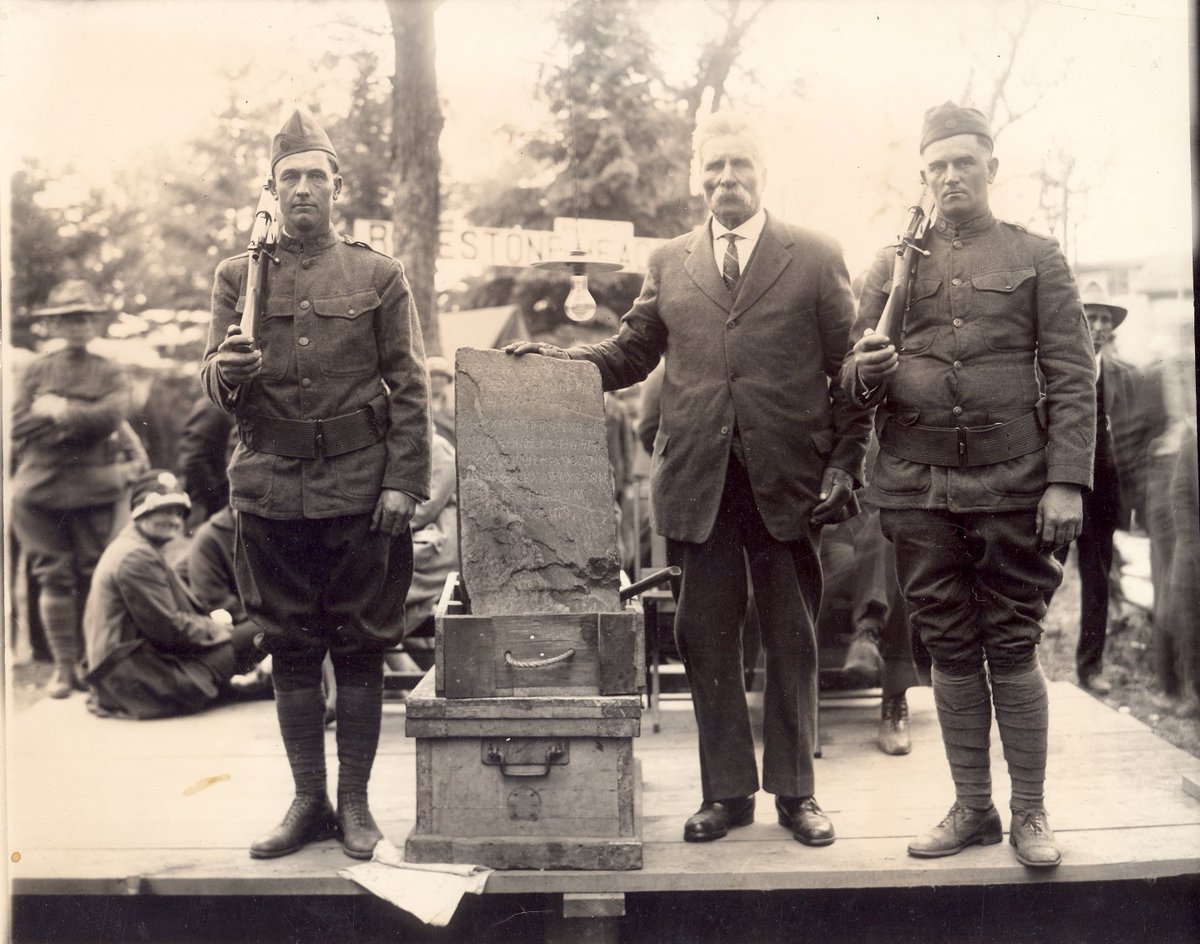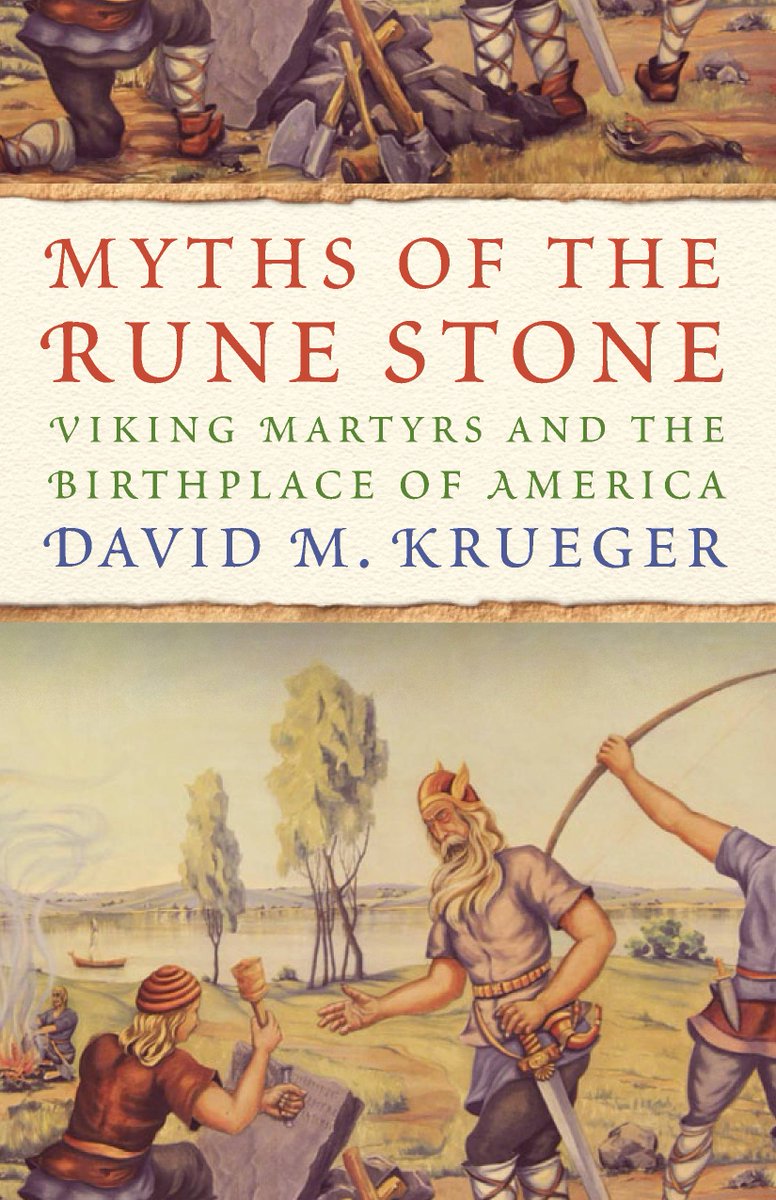
There's more to the story of Minnesota's Kensington Rune Stone than the debate about its authenticity as a Norse artifact from 1362. Its inscription served as an alternative myth of origin speaking to issues of race, religion, & identity: upress.umn.edu/book-division/… @UMinnPress
https://twitter.com/ScienceChannel/status/1363523026109743104
An overview: the artifact was unearthed by a Swedish farmer from his field in 1898. Scholars declared the stone to be the product of a hoax, but many locals persisted in asserting it was inscribed by Norse explorers 140 years before the explorations of Columbus. But WHY? 2/ 

The runic inscription tells of a band of Norsemen who had traveled "west from Vinland." Ten of the group were found "red with blood & dead." It also includes a prayer for protection and it inspired a myth of origin which served several social functions for white Minnesotans. 3/ 

Swedish and Norwegian immigrants found inspiration in this ethnoreligious story. Their ancestors had made a sacrifice and prepared the way for them to make a home in a new land. The story also soothed dislocation anxiety by providing a connection to the motherland. 4/ 

The story of "Viking" visitors to Minnesota yielded both economic and symbolic benefits. Civic boosters sought to draw tourists to "the real birthplace of America" and away from elite, east coast cities like Boston and Philadelphia. 5/ 

The inscription also served served as ideology of frontier conquest. The dead Norseman were understood as martyrs for white settlement. Local historians of the early 1900s described native people who killed the Norseman as "savages," rhetorically linking them to...6/ 

...the Dakota War of 1862. Nearly all Dakota people were exiled from the state in 1862 and 38 were hanged in Mankato in the largest mass execution in U.S. history. 7/
Remember the prayer? "AVM save from evil" was understood to be a prayer to the Virgen Mary. Local Catholics saw the stone as evidence that Catholic Vikings were the first to hold mass in America at a site which came to be known as the "Viking Altar Rock" near Sauk Centre 8/ 

Even Minnesota's most famous Catholic, Archbishop John Ireland, took an interest in the Kensington Stone, likely seeing it as a tool to proselytize Scandinavian Lutherans and claim a Catholic origin story in a state politically dominated by Protestants. 9/ 

Although I'm persuaded by runic language experts such Henrik Williams from Uppsala University and many others that the language of inscription originates in the late 19th century, I'm doubtful that the true believers will ever be convinced. 10/ startribune.com/what-s-the-tru…
Compelling narratives are often more powerful than scientific arguments. To persuade the public, scholars/scientists must find a way to build trust and understand the cultural and religious lenses through which people perceive reality. FIN/ To read more: mythsoftherunestone.com 

@threadreaderapp unroll
• • •
Missing some Tweet in this thread? You can try to
force a refresh


